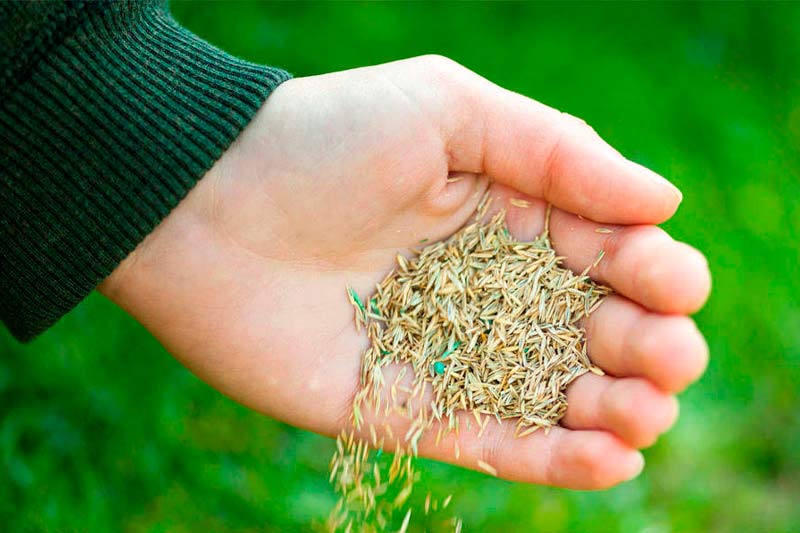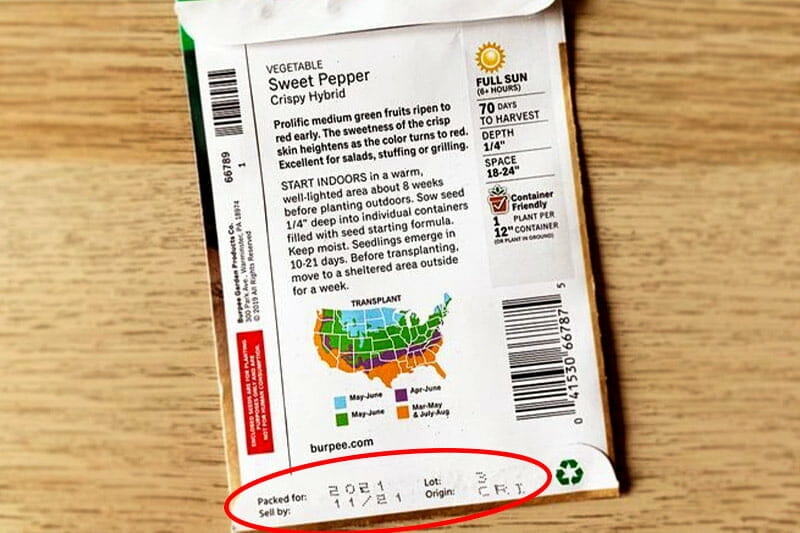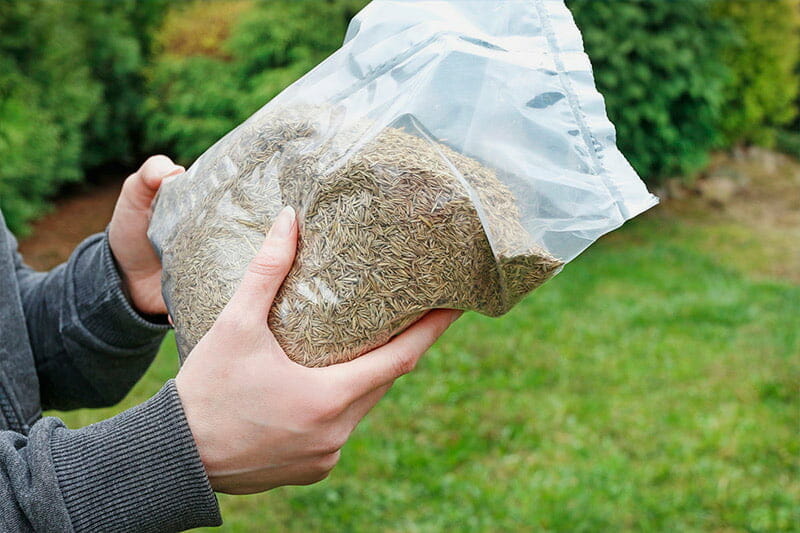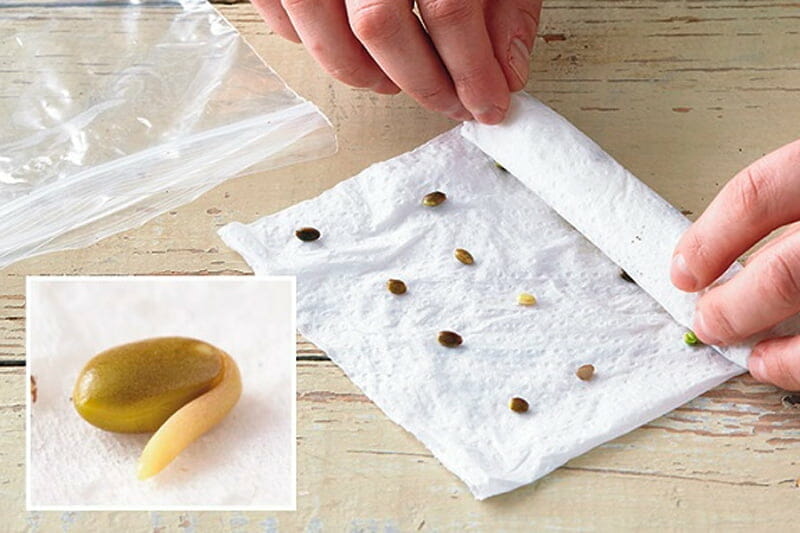Having an unopened parcel of turf seed is always beneficial in terms of resowing your lawn. However, what is the duration for which grass seeds remain viable? Keep reading to learn more about the longevity of grass seeds, methods for determining their viability, and proper storage techniques.
Old grass seed has a lower germination rate than fresher seeds (germination rate of grass seed decreases at an annual rate of 10 to 15 percent as grass seed ages). Poor storage conditions encourage harmful microflora and insects. And performing a physical inspection or a germination test can reveal viable grass seed.
Sowing older grass seed can damage your lawn. Also, an expired grass seed does not have adequate coverage resulting in uneven lawn growth and unwanted weeds.

What is the lifespan of grass seed?
You can store unused grass seed for up to five years, but the best time to use leftover seed is within 2 to 3 years of purchase. The longevity of grass seed depends on the grass species, seed type, grass type, and storage environment. Research by Oregon State University scholars reveals that keeping an entire bag of creeping bentgrass seeds in storage for five years will reduce their ability to sprout by 50 percent. And successfully storing perennial ryegrass, Kentucky bluegrass, and tall fescue seeds for 3 to 5 years will lead to a 50 percent reduction in growth rate.
How to tell when grass seed is going bad
Seed producers typically indicate when a bag seed is about to expire, including even the expiration date. Manufacturers usually indicate when grass seed expire, you can determine the status of your grass seed before throwing them away by the following methods.
Check the grass seed expiration.
You can determine the viability of a seed bag by checking the expiration date stamped on the pack. It is always a good idea to buy fresh seed from reputable seed producers. Although there are many reasons to make a grass seed expire, they do not go bad in the same manner as edible food.

Physical inspection.
Older or poorly preserved seeds often show physical signs of damage which you can identify by a visual inspection. This is a quick way to know when most grass seeds are going bad. However, the results provide only a rough estimation of your seed’s remaining shelf life.
Here is what to expect.
- Mold growth.
- Fungus growth.
- Discoloration.
- Clumpy or damp lumps of seeds.
The presence of mold or fungus growth on grass seed indicates moisture damage, signifying poor storage circumstances.

Performing a germination test.
A simple DIY testing hack can help you determine if your old bag of grass seeds can still germinate after expiration.
- Add a few drops of water to a towel.
- Let the paper towel moist for a few minutes.
- Place old grass seeds in the towel.
- Put the damp paper towel inside a plastic bag.
- Seal the plastic bag and place it in a warm location, preferably a clothes dryer or radiator.
- Open the bag after a few days to check if any of the grass seeds sprout.
- Sprouting seedlings is an indication that germination is possible. Adding more seeds can give you more preside results.

Does storing grass seed allow it to remain viable?
Keeping grass seeds in ideal storage conditions can keep them viable for about two to three years after the manufacturer’s tested date.
Ideal storage requirements include:
- A cool and dry environment.
- Sufficient air circulation.
- Average temperatures of between 40°F to 50°F.
Avoid storing grass seeds in damp conditions with temperatures less than 32°F. An unheated barn or a garden shed are unsuitable environments for storage. Proper storage places include dry and airy basements or cellars with mesh air vents to avoid too much moisture accumulation.
Factors that influence a grass seed viability
Grass seed viability is defined as its ability to germinate under reasonable conditions. And this can be influenced by a couple of factors, namely:
Biotic factors.
Also known as seed factors, these are factors relating to seed production. They include:
Genetic factors.
The genetic composition or character of each grass species can affect its longevity. For example, a long grass seed may have a better sprouting rate than shorter grass seeds.
Seed quality.
High-quality seed production methods are dedicated to nurturing seeds that produce grass of outstanding quality. Seed production in sub-optimal conditions, e.g., wet weather, direct sunlight, freezing temperatures, and unstable air temperature can result in lower sprouting rates, even under ideal storage situations. Valuable tips that help you purchase high-quality grass seed include:
- Buying grass seed packages with the expiration date.
- Purchase your grass seeds only from trustworthy stores (not the grocery store), distributors, and reputable gardening clubs.
Pathogen and pest damage.
Disease-causing pathogens, insects, and rodents decrease the shelf life of grass seeds. Pathogens spread during the production process can attack the seed embryo, severely impacting its ability to germinate.
Abiotic factors.
Abiotic factors such as temperature and moisture are crucial elements of seed storage, and perform an important role in keeping seeds viable during storage.
Find Great Overseeding services
This is a free service that quickly matches you with top-voted local lawn care and overseeding services.
Through HomeGardenGuides.com, you can get three estimates fast by real certified experts in your area in just 2 minutes.
- Scroll to the top of the page and enter your Zip code.
- Answer questions about your lawn job
- Your job details are forwarded to three local experts. They will send you a price estimate for the job and some friendly advice.
IMPORTANT: There is no obligation to hire. This is a free tool and service to be used at your pleasure.
Critical elements in storing grass seed
It is a common practice for homeowners to store grass seeds before or after seeding. One of the reasons why people store grass seed is to maintain its viability. The following elements are essential for keeping your seeds viable during storage.
Seed moisture content.
Regulating seed moisture content is a challenge during storage, and it is the most common cause of seed deterioration. It is a general rule that increasing moisture levels have a direct effect on seed deterioration. Also, increased seed moisture levels can result in mold growth and a reduced lifespan. Minimal amounts of seed moisture can harm the seed-living embryo. The Harringtons thumb rule clearly explains the impact of moisture on a seed ability to germinate. It states that seed lifespan doubles for every percentage decrease in seed moisture content.
Below is a table indicating seed moisture levels viz-a-viz storage length.
| Seed moisture percentage | Storage life |
|---|---|
| 11-13% | Six months |
| 10-12% | One year |
| 9-11% | Two year |
| 8-10% | Four year |
Relative humidity.
It is the current ratio of water content in the air to the maximum atmospheric water levels at any given temperature. Controlling relative humidity has a direct influence on regulating moisture content during seed storage. The process known as equilibrium moisture content explains that the gain in seed moisture is directly proportional to the relative atmospheric humidity levels during storage. It is important to note that the equilibrium moisture content for individual most seed species in storage at a given relative humidity rises as temperature levels reduce. Seeds stored at equilibrium moisture content do not experience an increase or loss in moisture levels.
Temperature.
Reduced temperature levels are beneficial to grass seeds because it helps to prevent mold growth and insect activity which grows in proportion to relative temperature. According to Harrington’s rule, seed lifespan is doubled for every 50°C loss in temperature.
Protection from microflora and insects.
Preventing insect and bacteria activity is another critical element of storing most seeds. A good to protect a bag of grass seed is to place it in a sealed container. Failure to prevent these pests and disease-causing organisms from infesting your storage environments can damage seeds.
Microflora – includes storage fungi and microscopic bacteria that can grow and thrive even at minimal seed moisture content. Common examples include Aspergillus and Penicillium genera. They produce toxins that damage living cells inside grass seeds causing loss of viability.
Insects – weevils and bugs can inflict considerable damage to seeds in storage. Maintaining low temperatures and low seed moisture contents during storage is key to solving insect problems. Also, cleaning the storage area, removing older infected seeds, and fumigation can eliminate insect infestation.
FAQ's
Grass seeds are incredibly resilient and often germination occurs even after the grass seed expire. However, planting seeds that are old, diseased, or damaged will result in a lawn with a thin layer of unhealthy turf even if you spend hours irrigating. Regardless of the season, you choose for planting seeds, or whether you seed carefully while following a normal watering schedule. The results will be the same.
You can store grass seed for two to three years under ideal conditions. However, seed germination rates may not be the same as fresh seeds. When grass seeds expire in storage, it is always good to throw the older seeds away instead of sowing them.






